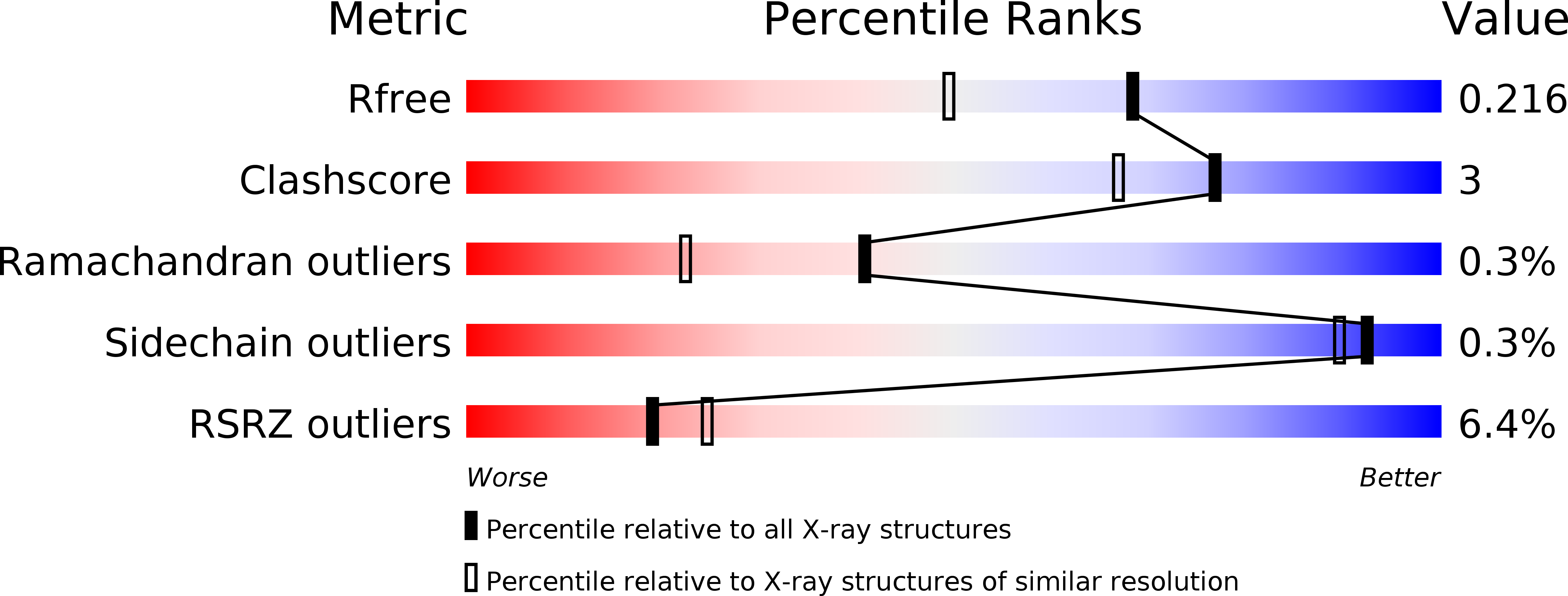
Deposition Date
2017-01-25
Release Date
2017-05-24
Last Version Date
2024-01-17
Entry Detail
PDB ID:
5MXX
Keywords:
Title:
Crystal structure of human SR protein kinase 1 (SRPK1) in complex with compound 1
Biological Source:
Source Organism:
Homo sapiens (Taxon ID: 9606)
Host Organism:
Method Details:
Experimental Method:
Resolution:
1.75 Å
R-Value Free:
0.20
R-Value Work:
0.17
R-Value Observed:
0.17
Space Group:
P 43 21 2


